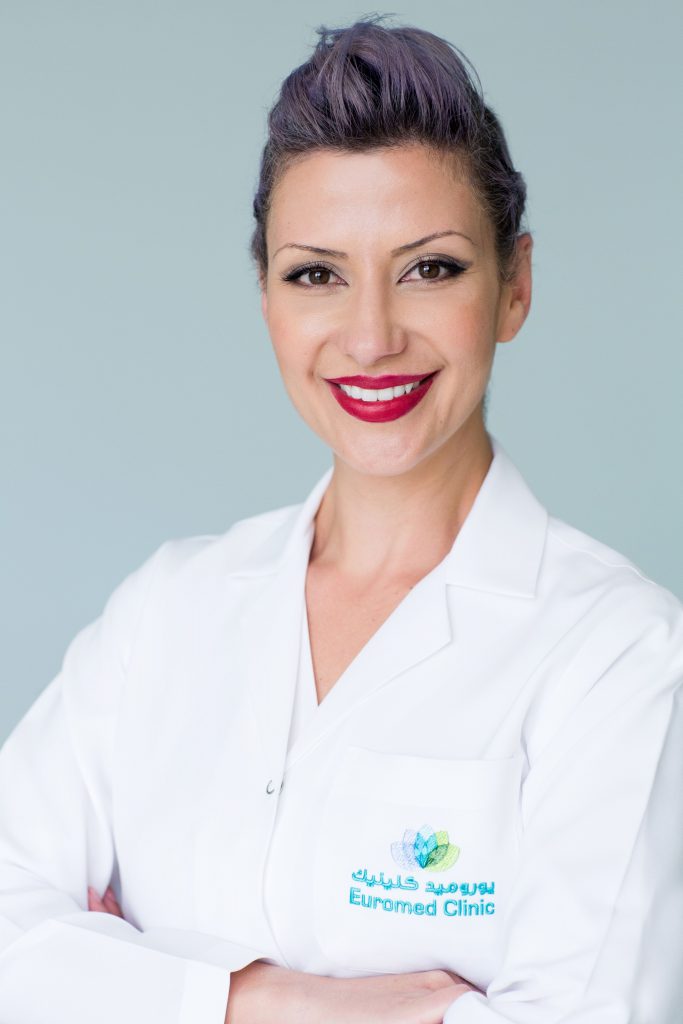Teeth Whitening 101
My favorite dentist in Dubai, Dr Sofia at Euromed (Fun Fact: my sister and closest friends are also her patients.) She’ll be answering questions you send in for dental, so feel free to comment below or send through your questions via DM on Instagram. This month, Dr Sofia talks to myfashdiary readers on teeth whitening, her thoughts on them and if we should even be doing it.
Teeth whitening: What are your thoughts? How often should people be doing it? Is it best to do it a salon or with a dentist?
Teeth whitening techniques have been well researched over the years, and the results obtained both in the dental office and at home are virtually guaranteed. The active bleaching ingredient in most whitening products is carbamide peroxide, which yields hydrogen peroxide and this in turn interacts with the pigments that exist in enamel and dentin, resulting in changing their light reflection capacity making the teeth look lighter over all. It is vital to understand that even though enamel is the outermost layer of the tooth, it is the layer of tissue beneath the enamel, called dentin, which absorbs the majority of the stain. In order to achieve successful whitening, the product flows through the enamel tubules and begins to lighten the underlying stained dentin.
This means that only a dental professional is able to assess the condition of the teeth, the root exposure and the gum biotype in order to be able to choose which exact product concentration and method will achieve the best results for each patient based on their individual case.
A whole variety of light sources with different wavelengths and technology (including plasma light, LED light, lamps, lasers) in combination with different concentrations of the whitening gel, offer dentists the possibility to design different treatment plans and options for each patient. This is something that a salon simply cannot do as they lack the knowledge and expertise. It is important to remember that salon products, online and pharmaceutical products (used with or without light) are regulated by law to be of less concentration, light intensity and quality. They are therefore placed under the category of cosmetic products and not dental products, which by default means that the results will be less than what could be achieved by professional dentists. That is why they are often cheaper alternatives to what is available via a dental surgery.
Many times, using home kits with custom-made trays at home are the best option to use when the stains are deep and the teeth’s initial colour is quite dark. Only home kits made in the dental office are completely safe to use, as they are created under dental supervision and tailor-made to the patient’s needs.
Once the final result is achieved, then longevity of results depend on the maintenance the individual patient keeps on an everyday basis. Proper hygiene, regular drinking of water after ingestion of spicy foods, not cleaning after the intake of drinks with colour (such as coffee and tea) can all affect the results over time. Teeth whitening tooth pastes may help in maintaining the results. Touch ups of whitening may be done every 8-9 months depending on the condition of the teeth and saliva mineral concentration individually. I would always recommend, however, to have scaling (dental cleaning) done before whitening touch ups.




